Aesthetics, history, and renowned Cabernets draw collectors to southern Calistoga winery.
Larkmead Vineyards, whose tastings are geared toward collectors of its renowned Cabernets, lists its founding date as 1895. That was the year the second of this property’s three owners in the past century and a half took possession. Even before 1895, though, grapes were planted here by Lillie Hitchcock Coit, the free-spirited daughter of the initial owners. Their estate encompassed 1,000 acres now divided among a few wineries and Bothe–Napa Valley State Park.
Early History
Coit, who donated the funds to build San Francisco’s Coit Tower, named Larkmead for the meadowlarks then plentiful in the north valley. From 1895 to 1948, the Salmina family grew grapes and made wine on the estate, whose 150 acres (110 of them planted to vines) are farmed these days by Cam Baker and Kate Solari Baker. Kate’s parents, Larry and Polly Solari, purchased Larkmead in 1948.
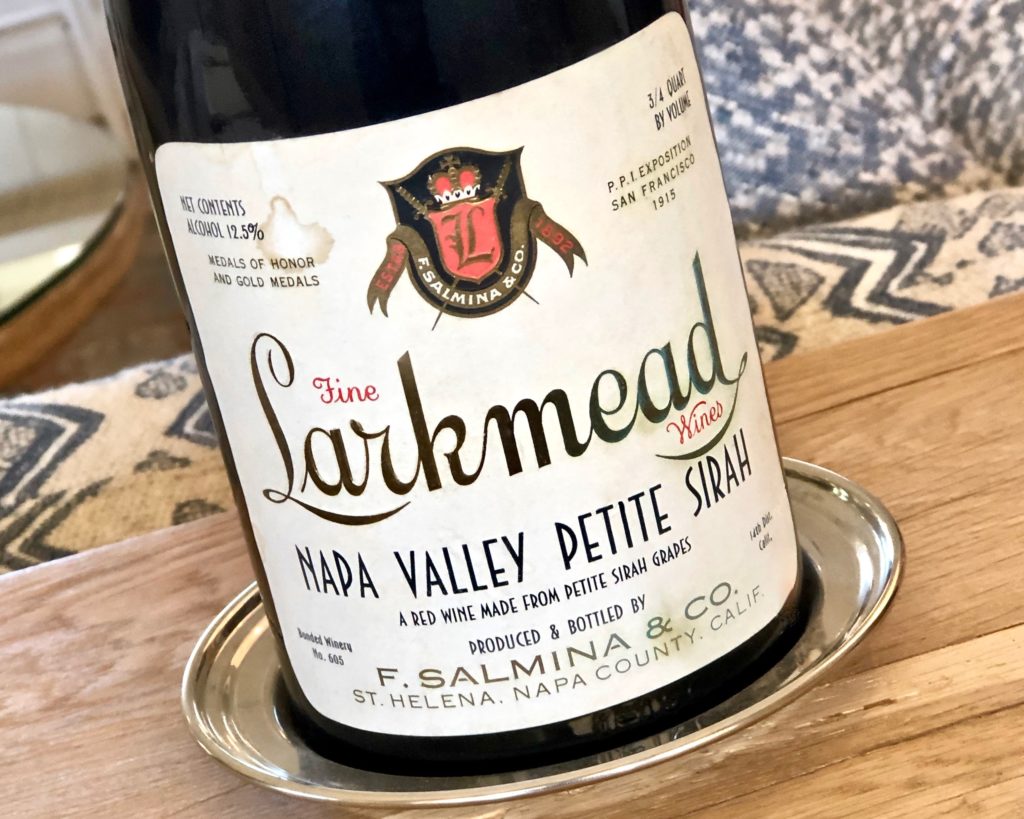
Keeping Accounts
A visit to Larkmead revolves around aesthetics as well as history. White walls in airy, light-filled spaces provide a soothing backdrop for vintage wine bottles from the Salmina era and photographs and other ephemera that evoke this land’s illustrious past. Kate’s paintings please the eye, as does the colorful landscaping by Kate’s daughter, Anna Baker. Kate’s “Keeping Accounts” series of mixed-media collages incorporates Polly’s business ledgers to great effect.

Looking Forward
One stop on tours, a component of most tastings, is a 3-acre vineyard planted in 2019 to research the effects of climate change on Cabernet Sauvignon, the Napa Valley’s premier grape. In addition to Cabernet, the vineyard contains former Napa red-wine stalwarts like Charbono and Petite Sirah, along with Aglianico, Tempranillo, and other varieties known to thrive in high heat.
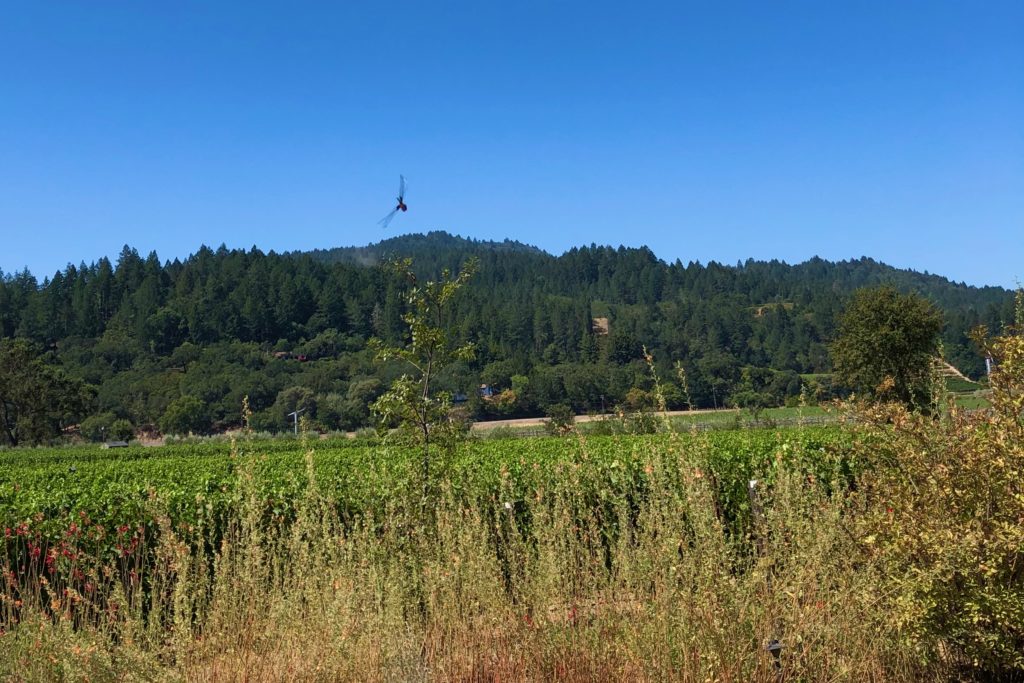
The Wines
Larkmead makes a Sauvignon Blanc, Lillie, named for Lillie Hitchcock Coit, and a small amount of Tocai Friulano, an Italian white varietal, from old vines. Cabernet Franc and Merlot take the lead in two Bordeaux-style red blends, LMV Salon and Firebelle.
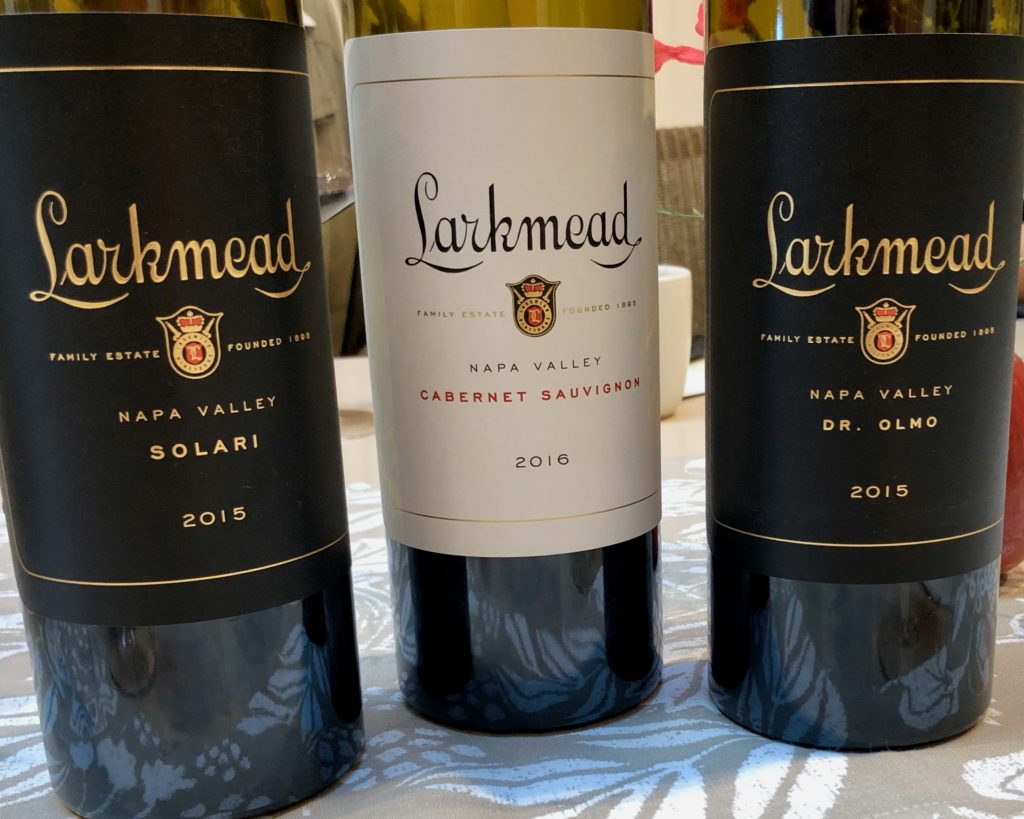
The grapes for the flagship white-label Napa Valley Cabernet Sauvignon come from a few sections of the estate, which has three distinct soil types, each imparting different characteristics to the wine. Three black-label Cabernets, Dr. Olmo, Solari, and The Lark, come from specific blocks, or areas, where one of the soil types predominates. Gravelly Cortina soils, for instance, lend Dr. Olmo, named for a famous viticulturist, its minerality. On the other hand, the Solari, from Pleasanton loam soil, has rich tannins and deep flavors but with light floral aromatics less detectable in Dr. Olmo.
Tip: Visits to the Larkmead estate are strictly by appointment, and children under 21 and pets are not allowed.
Why go: rich history; paintings by winery owner Kate Solari Baker; genteel hospitality; Cabernets made with finesse.
Itinerary
Larkmead Vineyards appears in 3 Historic Napa Valley Wineries Day Trip.
Info
1100 Larkmead Ln., Calistoga, CA 94515
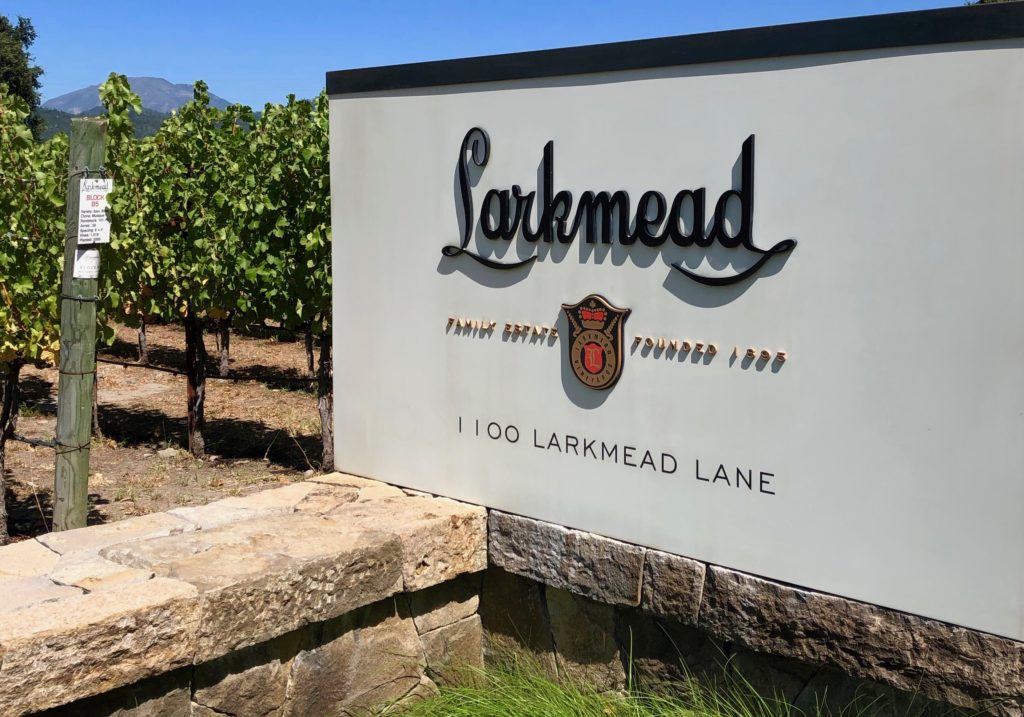
More Napa Valley Itineraries
Downtown Napa in a Day
48 Perfect Hours in Calistoga
3 St. Helena Wineries with a Personal Touch
2 Splendid Days in Walkable Yountville
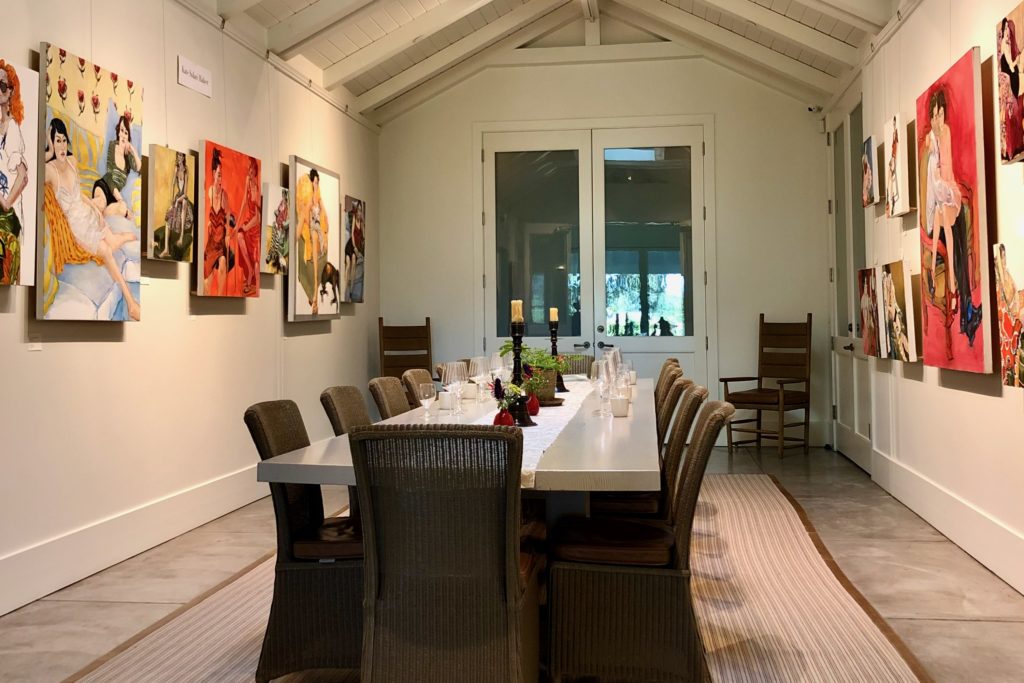
Pingback: Theorem Vineyards Team Crafts Classy, Aromatic Wines – Daniel Mangin
Pingback: STORY INDEX BY REGION – Daniel Mangin